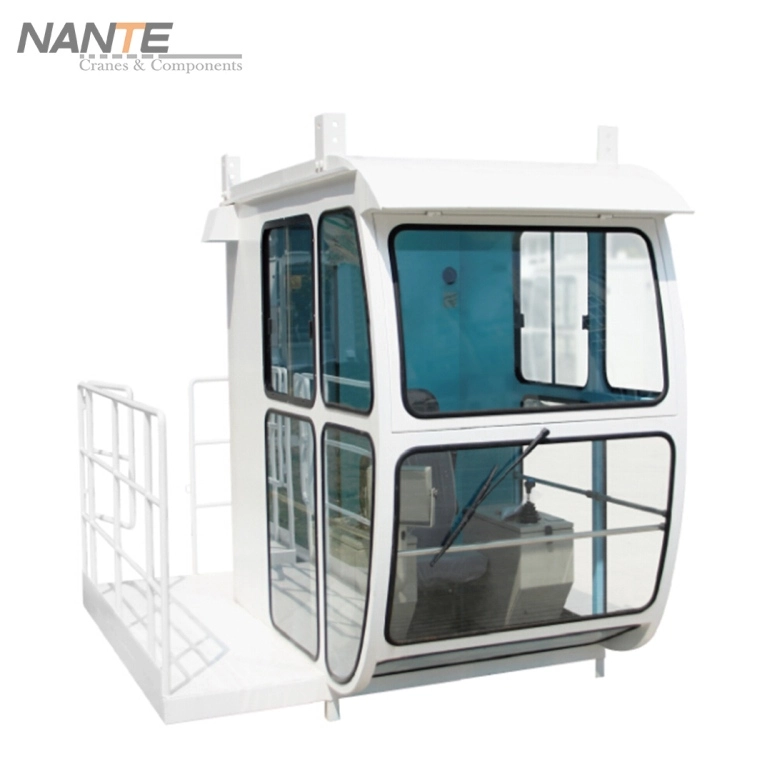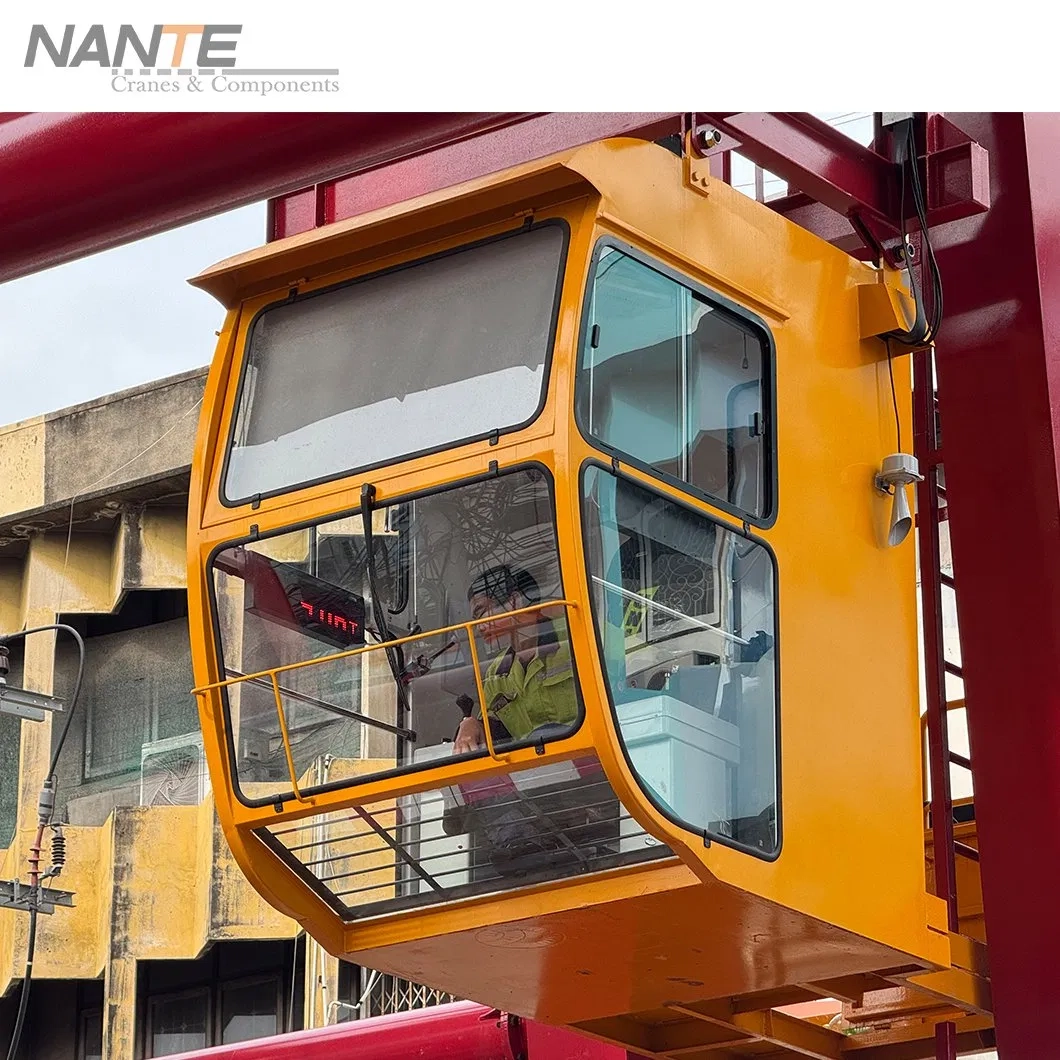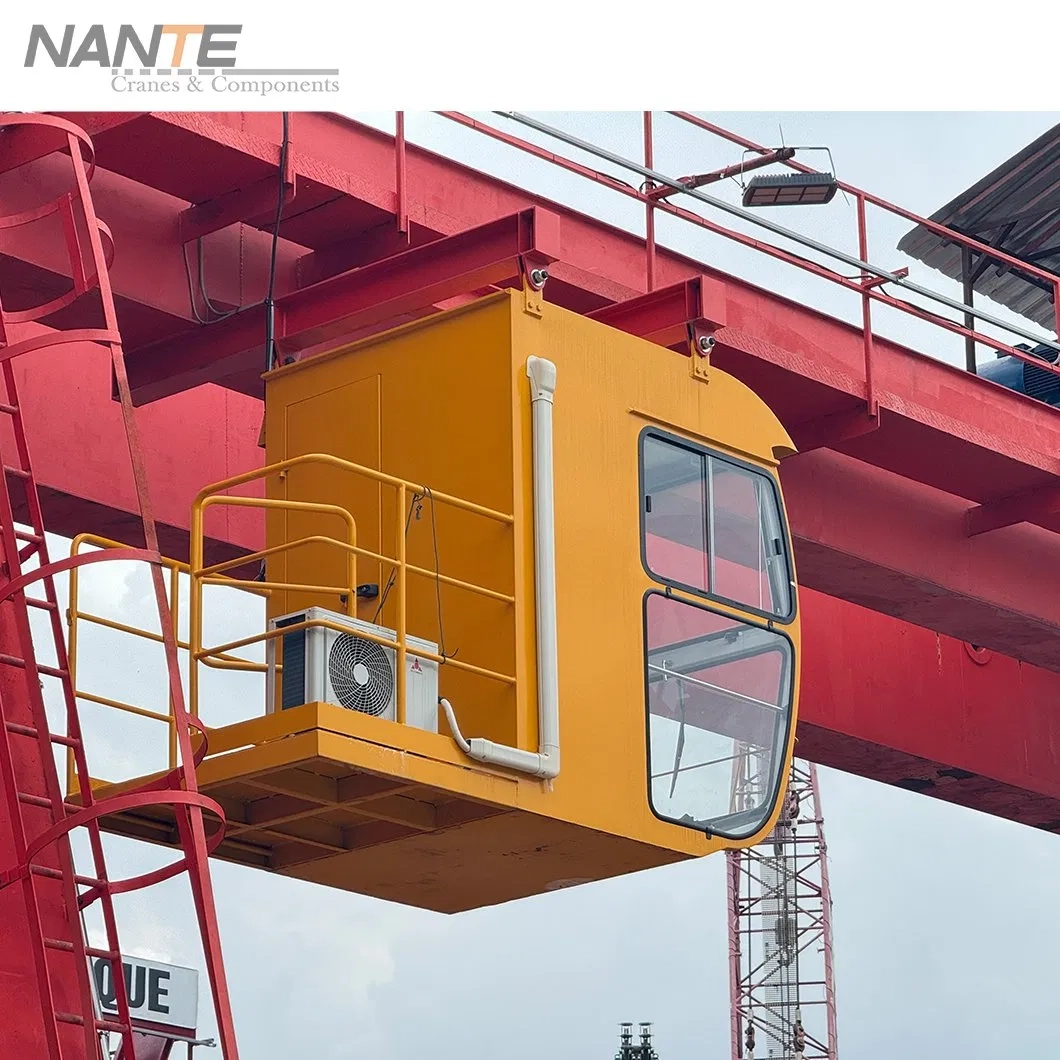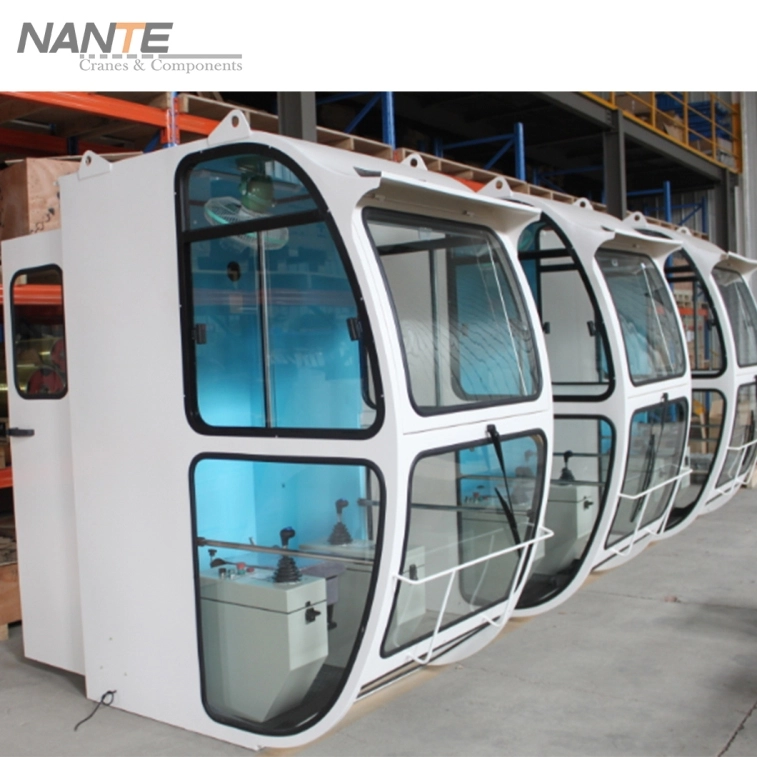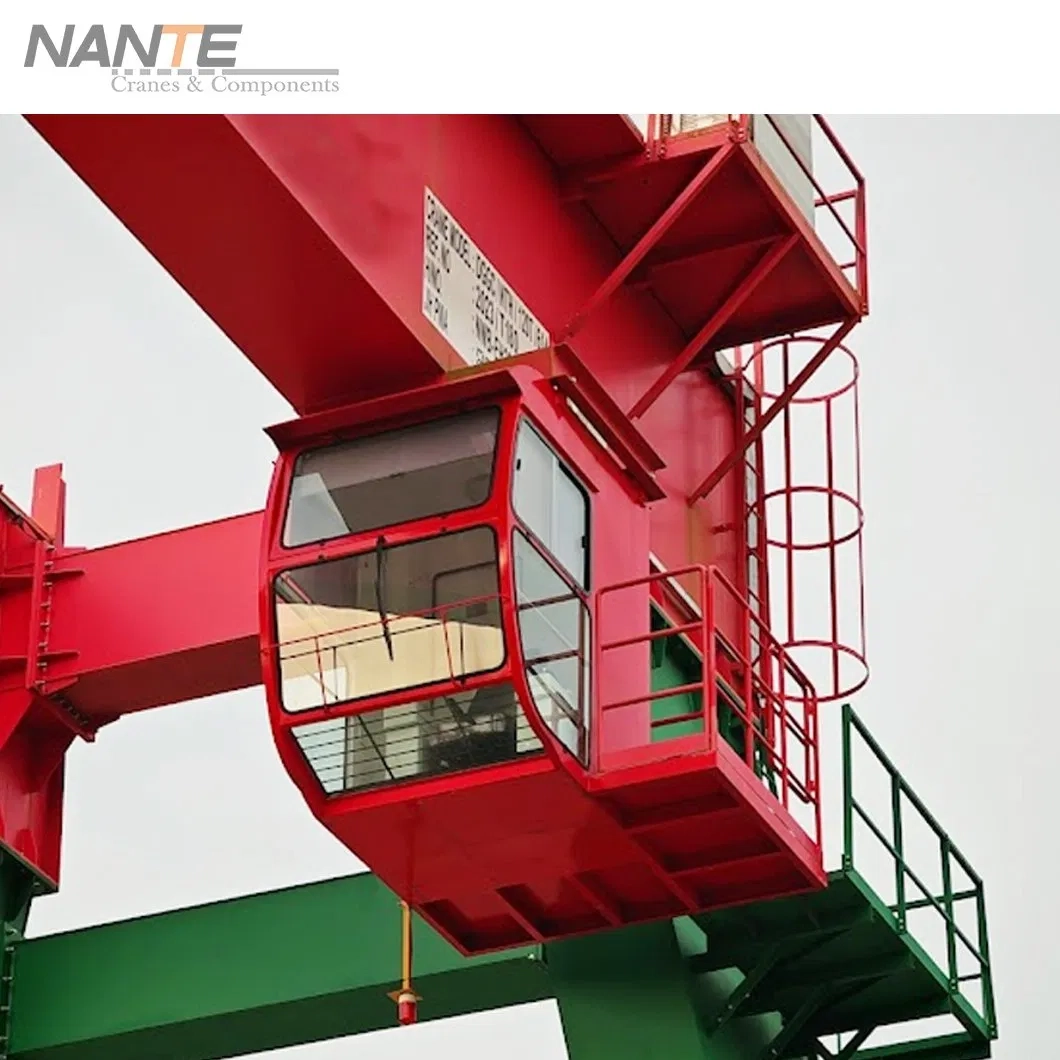Inside the Crane Cabin: Components, Layout, and Operator Comfort
Date: 2025-06-13 Share:
A crane cabin is the control space where operators work. It has a seat and joystick console. It’s like the heart of a crane. It helps operators lift and move heavy loads safely. It also helps them work smoothly. Good cabin design keeps operators safe. It makes them comfortable. It boosts their work output. These cabins are vital in fields like factories, building sites, ports, and shipping. They handle items from steel beams to containers.
Components of a Crane Cabin
Crane cabins have parts that make them safe, useful, and cozy. Each part has a special role. It helps operators do their job better.
Structural Components
The cabin’s frame uses strong metal, like steel. This keeps it tough in harsh settings. Glass walls are at least three and a quarter inches thick. They give clear views of the work area. These walls can have heat shields or anti-glare coatings. Some have infrared protection or tinting. These improve visibility. They also protect operators from bright light or heat.
Control Systems
Joysticks and buttons let operators move the crane exactly. Human Machine Interfaces (HMIs) are digital screens. They show live data about the crane and work area. This includes load weight or machine status. This info helps operators decide quickly.
Protective Devices
Safety rails and grilles stop falls or injuries. Door locks keep the cabin secure. The fully sealed design shields operators from dust, rain, or sparks. These features make a safe workspace. They work well in tough places like building sites.
Electrical Components
Cabins have outlets, sockets, and ceiling lights. These are practical. Lights give clear visibility inside. Outlets power tools or devices. This makes the cabin a working control center.
Comfort Features
Ergonomic seats with air suspension adjust to the operator’s body. They reduce strain during long hours. Swinging fans keep air fresh. Clothes hooks add convenience for storing items.
Safety Features
The cabin uses fire-proof and dust-proof materials. These guard against dangers. Heat-blocking layers keep the inside comfy. This works even in extreme weather. It helps operators stay safe and focused.
Additional Components
HVAC systems control temperature and air quality. Outside cameras help operators see hidden spots. This makes moving loads safer. It also helps avoid obstacles.
Layout of a Crane Cabin
The layout of a crane cabin is planned to make work easier. It keeps things safe. It also makes work smoother.
Positioning
Crane cabins sit on the bridge or trolley for overhead cranes. This gives a high view. For mobile cranes, they’re often lower. This improves control. This setup helps operators see the load and area clearly.
Visibility
Big glass panels cover at least three walls. They offer a wide view of the crane’s hooks, loads, and job site. Floor view windows use tempered glass. They let operators look straight down. This ensures they can watch everything without strain.
Space Utilization
Cabins are small but have enough room. Operators can move comfortably. Controls like joysticks are within easy reach. This stops operators from stretching or twisting. It reduces tiredness. It also improves focus.
Practical Features
Removable 3mm steel panels have anti-slip rubber mats. These make the floor safe and easy to clean. Thermal insulation blocks noise and heat. This creates a quiet, comfy workspace. It works in loud or hot settings.
Customization
Cabins can be adjusted to fit specific needs. For example, the entry point can change. Extra space can be added for certain job sites. This flexibility ensures the cabin suits any project perfectly.
Operator Comfort in Crane Cabins
Comfort is vital for operators. They work long hours in tough settings. A well-planned cabin keeps them focused. It also keeps them healthy.
Ergonomic Design
Adjustable chairs with air suspension support the operator’s back. They reduce tiredness. Some seats are heated. This adds comfort in cold settings. These designs help operators stay cozy during long shifts. They improve focus.
Climate Control
HVAC systems offer cooling, heating, and air cleaning. They keep the cabin at a nice temperature. They ensure clean air. This is key in dusty or polluted work sites like ports or factories.
Noise and Vibration Reduction
Insulated glass and special materials block loud sounds. These come from the crane or job site. They protect operators’ hearing. Anti-shake features, like padded mounts, reduce trembling. This makes the cabin feel steady and comfy.
Lighting
Soft ceiling lights give enough brightness. They avoid eye strain. This is crucial for long hours. Harsh lights can make focusing hard. They can also cause headaches.
Visibility and Monitoring
Wide glass panels and outside cameras give a clear view. They remove blind spots. HMIs show live data, like load position. This helps operators make quick, safe choices.
Communication
Built-in radio systems let operators talk to ground crews easily. This ensures smooth teamwork. It’s key on busy job sites. Clear communication prevents accidents.
Applications of Crane Cabins
Crane cabins are used in many fields and settings. They’re found in overhead cranes for indoor factories. They’re also in gantry cranes for outdoor ports. These cabins handle tough conditions. These include extreme heat or dust. They have durable parts like insulated walls and strong glass.
Common uses include port tasks for moving containers. They handle waste for sorting materials. They lift beams on building sites. They are used in papermaking and machine work. They also help in shipping. Indoors or outdoors, crane cabins keep operators safe and efficient. They work no matter the job or setting.
Introducing Nante’s Crane Operator Cabins
For safe and smooth crane cabins, Nante offers top-quality solutions. They can be tailored. Our cabins are built for great vision, comfort, and safety. They make crane tasks easier. They are sturdy and fire-proof. They are dust-proof and heat-insulated. They are fully sealed to protect operators.
Technical Specifications of Nante Crane Cabins
| Model | Dimensions (WHD) | Optional Features |
| NTC-1.2 | 1200mm×2100mm×1600mm | Leather Seat |
| NTC-1.4 | 1400mm×2200mm×1600mm | Leather Seat, 3 Joystick Console, Monitoring Screen |
| NTC-1.5 | 1500mm×2100mm×2200mm | Leather Seat, 3 Joystick Console, Monitoring Screen |
You can add features like air conditioners or walkway platforms. These fit your needs. Nante crane cabins work for overhead and gantry cranes. They support single or dual hoists. They are perfect for ports, building sites, and factories.
Conclusion
Crane cabins are crucial for safe and smooth crane tasks. Their parts, like joysticks, HMIs, and strong glass, help operators control cranes exactly. Smart layouts ensure clear views and easy access to controls. Comfort features like ergonomic seats and climate control keep operators focused. They also keep them healthy. From ports to building sites, crane cabins make tough jobs simpler.
Modern designs and tailored options boost performance. For creative crane cabin solutions, contact Nante. Find the perfect fit for your project.

